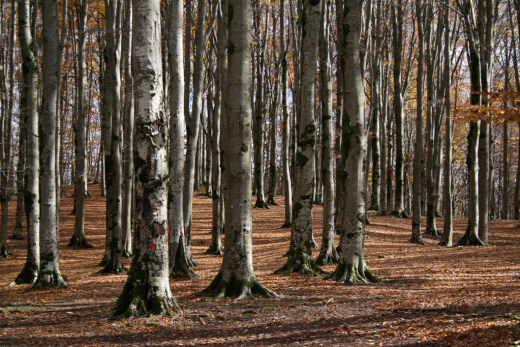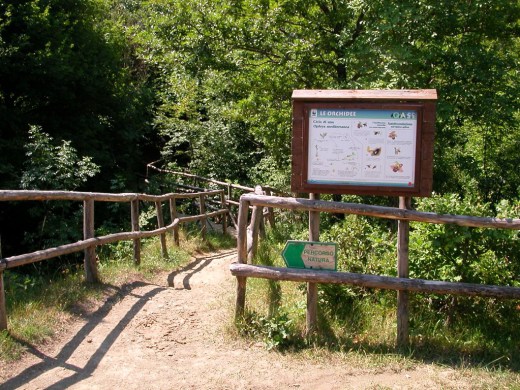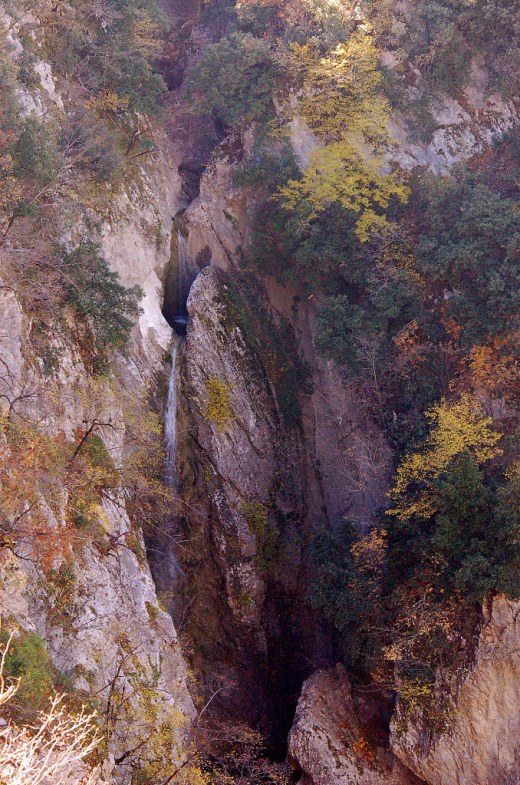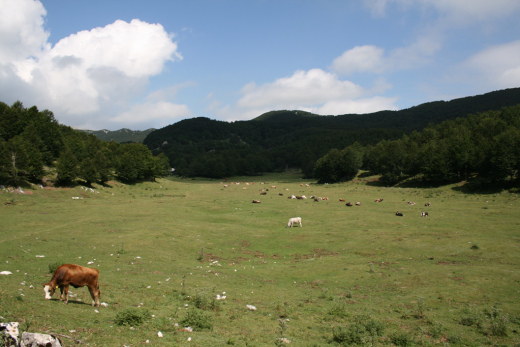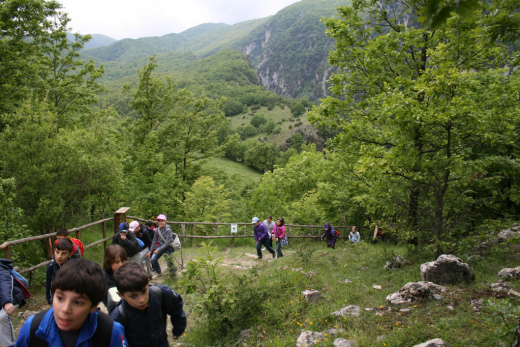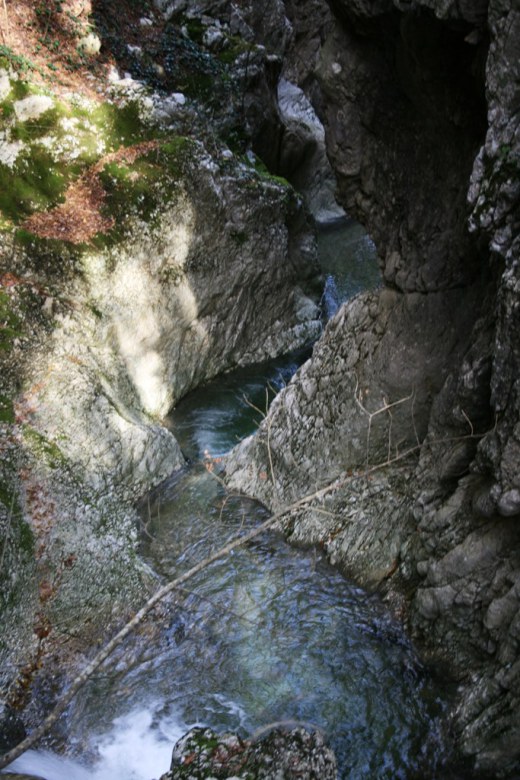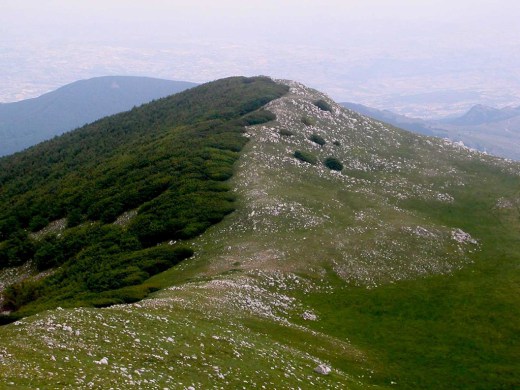
Guardiaregia-Campochiaro Regional Nature Reserve – WWF Oasis
This post is also available in:
 Italiano (Italian)
Italiano (Italian)
The WWF Oasis-Guardiaregia-Campochiaro Regional Nature Reserve is entirely located in the municipalities of Guardiaregia and Campochiaro, in the province of Campobasso – on the Molise side of the Matese massif range. The protected area extends over 7.746 acres: this is one of the largest areas among those managed by the WWF in Italy.
The oasis includes three natural environments: the gorges of the Quirino Stream with the San Nicola Waterfall, Mount Mutria, and the karstic area of Campochiaro mountain.
– The Gorges of the Quirino Stream, located near the village of Guardiaregia, form a narrow and deep crack between the town and the heights of Torretta, with a length of about 2.17 miles from 2.624 ft above sea level in Arcichiaro, to about 1.968 ft in Guardiaregia (near the church of Santa Maria ad Nives). Listed the most important canyons of the Apennines, Quirino Gorges represent the typical incision with a double tectonic and karstic origin; in fact, the fracture caused by the great events that led to the lifting of the Matese massif was excavated and modelled in millions of years by the never-ending powerful flow of the water.
The waterfall, which reaches a total height of about 100 meters, has a seasonal regime and is devoid of water only in July and August.
-Mount Mutria is the highest peak of the Reserve (4.504 ft above sea level) and appears as a long ridge of about 4.5 miles, whose northern side is completely covered by a thick beech forest.
-The Campochiaro mountain, instead, has a less tormented orography; devoid of high peaks, it culminates at “Soglietta degli Abeti”, at an altitude of 5.360 ft m above sea level, entirely covered with trees and interspersed with the karstic plateaus of Chianetta, Valle Uma, Piscina Cul di Bove, and Piana Marianella. It includes the spectacular underground caves of “Pozzo della Neve” (-3438 ft) and “Cul di Bove” (-2.995 ft) which, in terms of depth and extension, are among the most impressive abysses in Italy.
FLORA
In full compliance with the Habitat Directive of the European Union, there are two main habitats of great importance in this oasis (areas at the greatest risk of extinction): the forests of the Tilio-Acerion valleys of the Quirino Torrent Gorges, and the beech woods of Taxus baccata and Ilex aquifolium of Mount Mutria and Mount Campochiaro.
The vegetation of Gole del Quirino includes two very interesting species: the holm oak (Quercus ilex) in one of the rare locations in the Matese area, and the strawberry tree (Arbutus unedo), a shrub typical of the Mediterranean scrub – in the only site reported on the eastern side of the Matese Massif.
The slopes of Mutria, as well as the Mountain of Campochiaro, are, on the other hand, the realm of the beech (Fagus sylvatica) which forms spectacular high forests. In “Tre Frati”, for instance, there are some imposing specimens estimated to be around 500 years old.
At lower altitudes and also on the slopes exposed to S-SW, other vegetal formations can be identified such as the black hornbeam (Ostrya carpinifolia), the Turkey oak (Quercus cerris), the hornbeam (Fraxinus ornus), the Lobel’s maple (Acer cappadocicum lobelii), common laburnum (Laburnum anagyroides), and dogwoods (Cornus mas, Cornus sanguinea).
The meadows of Mount Mutria, especially in spring, are full of very spectacular blooms: crocuses, carnations and above all, Alpine Soldanella, Androsace villosa, and Primula auricola.
Furthermore, in different areas of this oasis it is possible to observe other important blooms, including the Solomon’s seal (Polygonatum multiflorum), the orange lily (Lilium bulbiferum), Aquilegia vulgaris, the blue anemone (Anemone Apennine), Hepatica nobilis, Atropa belladonna, and 38 species of wild orchids.
FAUNA
Wolves are the very kings of this protected area; they usually dwell around the forest paths at the lower altitudes of Mount Mutria. Other mammals include wild cats, badgers, squirrels, wild boars, and roe deers.
Given the abundance of water for most of the year, amphibians are another important presence in this oasis and it is very interesting to find rare Italian endemisms such as the spectacled salamander, which is a true symbol of this Reserve and has recently been re-classified as a unique subspecies called salamander perspicillata.
In the undergrowth of the beech forest, it is not difficult to come across the great fire salamander and in spring, both on the Rio Vivo and San Nicola Streams there are a lot of the Dalmatian frogs. Reptiles species include grass snakes and Italian Aesculapian snakes.
Among the birds of prey, golden eagles have been sighted several times in flight over the beech woods, quite obviously searching for food; lanner falcons have been observed as well, namely around the Gorges of Quirino; there are also peregrine falcons, honey buzzards, red kites, and common buzzards. Among the other birds, there’s the Alpine chough and, throughout the area, the common raven, the great spotted woodpecker, the green woodpecker and the nuthatch; on the cold waters of the San Nicola and Rio Vivo Streams, it is possible to see the peculiar white-throated dipper.
In the protected area, around 340 species of night and day butterflies have already been recorded and, among other insects, there’s the rare and fascinating Rosaria Longicorn (Rosalia alpine).
This post is also available in:
 Italiano (Italian)
Italiano (Italian)
Contatti
Contrada Mencaro SNC - Guardiaregia(CB)
338 3673035
guardiaregia-campochiaro@wwf.it
http://www.oasiguardiaregiacampochiaro.it
Altre info
Dal martedì alla domenica. Visite guidate e gruppi su prenotazione.

